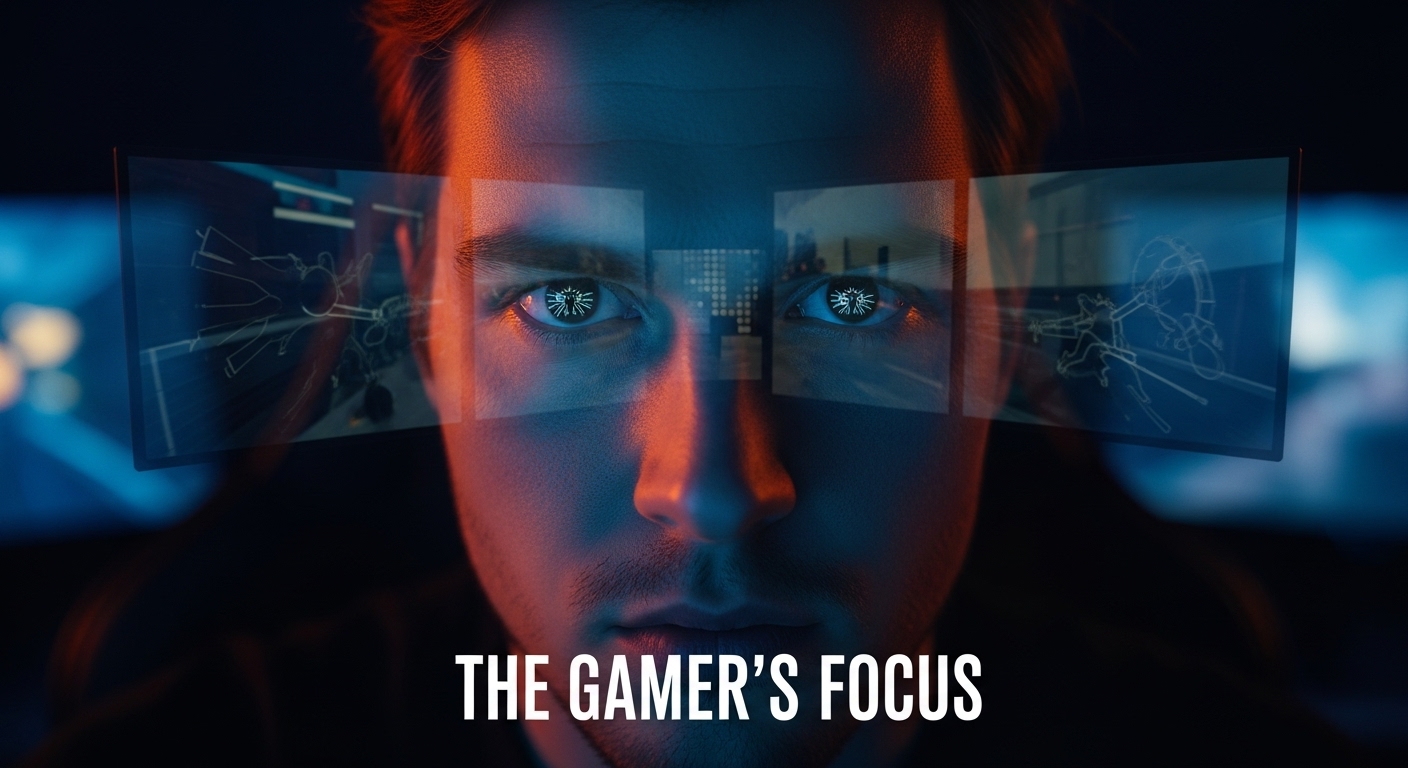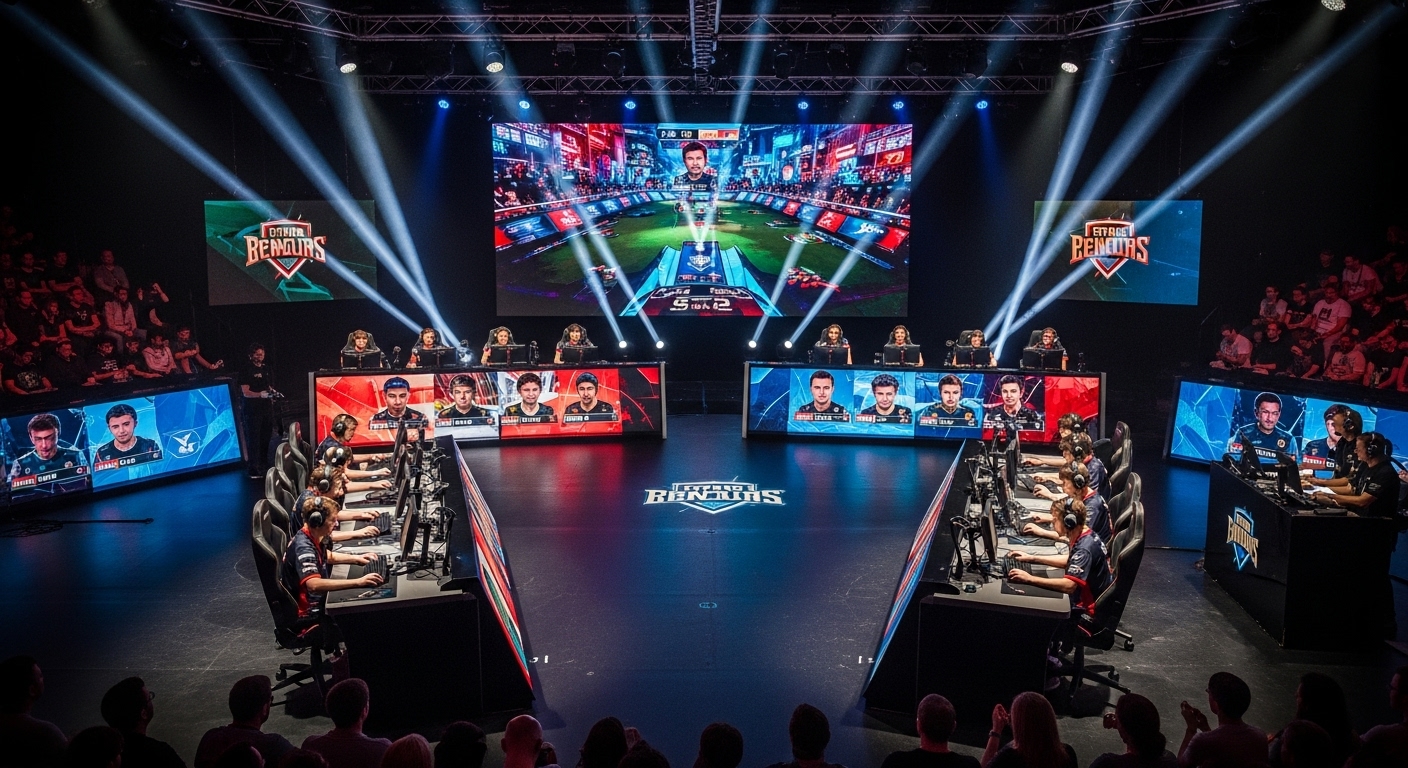Introduction: Esports Enters the Spotlight
In the span of just a few decades, esports has transformed from a niche hobby for dedicated gamers into a global phenomenon that commands audiences, sponsorships, and prize pools rivaling traditional sports. Competitive gaming, once dismissed as a pastime, is now a legitimate industry with professional teams, international tournaments, and millions of passionate fans worldwide. The growth of esports reflects both the technological evolution of gaming and the cultural shift toward digital entertainment.
Esports encompasses a wide variety of games, including real-time strategy, first-person shooters, multiplayer online battle arenas, and sports simulations. Unlike traditional sports, esports is inherently digital, relying on technology to create immersive and competitive experiences. This digital foundation has allowed esports to thrive in the age of streaming, online communities, and global connectivity.
This blog explores the world of esports—its history, growth, industry dynamics, cultural impact, and future potential—highlighting why competitive gaming has become one of the most exciting and transformative entertainment sectors of the 21st century.
The Origins of Esports
The seeds of esports were planted in the late 1970s and 1980s when the first video game competitions began to appear. Early arcade games like Space Invaders and Pac-Man attracted local competitions, often held in arcades or at school events. Players competed for high scores, trophies, or recognition, establishing the earliest forms of competitive gaming.
In the 1990s, the advent of multiplayer PC gaming transformed esports into a more structured and social experience. Games like Doom, Quake, and StarCraft introduced organized tournaments and ladder systems, laying the groundwork for professional competition. The rise of the internet allowed gamers to connect across cities, countries, and continents, giving esports a global dimension for the first time.
Early esports tournaments were small and niche, often organized by gaming magazines or local communities. Despite their modest beginnings, they demonstrated the competitive spirit and passion that would define the industry in the decades to come.
The Growth of Competitive Gaming
The 2000s marked a turning point for esports, fueled by technological advancements, game design innovations, and the rise of streaming platforms. Multiplayer online games like Warcraft III, Counter-Strike, and Dota introduced new levels of strategy, teamwork, and competition. International tournaments began offering significant prize money, attracting skilled players who could now pursue gaming as a career.
Professional teams and leagues emerged, particularly in countries like South Korea, which became a global hub for esports. South Korean culture embraced esports as a legitimate pursuit, with dedicated gaming arenas, televised matches, and celebrity players achieving mainstream recognition. The success of esports in South Korea provided a blueprint for global expansion.
By the 2010s, esports had entered the mainstream, with events filling stadiums and millions of viewers watching online. Streaming platforms like Twitch and YouTube Gaming enabled fans to watch competitions live, interact with commentators, and follow their favorite teams. Sponsorships from major brands began to pour in, further legitimizing esports as an entertainment industry on par with traditional sports.
Popular Esports Games and Genres
Esports is defined not only by competition but also by diversity. Different genres of games attract different types of players and audiences, creating a rich ecosystem of competitive gaming.
Multiplayer Online Battle Arena (MOBA) Games
MOBA games like League of Legends and Dota 2 have become some of the most popular esports titles. They require strategic thinking, teamwork, and precise execution. Tournaments such as the League of Legends World Championship attract millions of viewers worldwide and offer prize pools that reach tens of millions of dollars.
First-Person Shooters (FPS)
FPS games like Counter-Strike: Global Offensive, Call of Duty, and Valorant focus on precision, reflexes, and team coordination. FPS competitions often take place in fast-paced, high-stakes environments, creating intense spectator experiences that draw both casual viewers and hardcore fans.
Battle Royale Games
Battle Royale games, including Fortnite and PUBG, have redefined competitive gaming with their large-scale, last-player-standing mechanics. These games combine strategy, survival, and quick reflexes, appealing to younger audiences and casual gamers alike. The accessibility and fast-paced nature of Battle Royale games have helped expand esports’ global reach.
Sports Simulations and Fighting Games
Sports simulations like FIFA and Madden, along with fighting games such as Street Fighter and Super Smash Bros., offer competitive environments rooted in traditional sports and action-based gameplay. These genres attract both casual players and professional athletes who bring unique skills to virtual competition.
Esports as a Professional Career
Esports is no longer just a hobby; it is a viable career path for many players. Professional gamers dedicate hours of training each day, honing skills, analyzing opponents, and strategizing for upcoming tournaments. Top players often sign contracts with professional teams, receive salaries, and secure sponsorship deals with major brands.
The rise of esports coaches, analysts, and support staff mirrors traditional sports organizations. Teams employ professionals to study game mechanics, analyze competitor strategies, and provide mental and physical support to players. Training facilities, much like traditional sports academies, offer specialized environments for players to practice and improve.
For many, esports provides not only financial rewards but also fame and social recognition. Popular players become influencers, streaming their gameplay to millions of fans and building personal brands that extend beyond competition. Esports has created a new generation of celebrities who thrive in both digital and traditional media.
The Global Esports Industry
Esports has grown into a multi-billion-dollar global industry, encompassing tournaments, sponsorships, media rights, merchandise, and streaming revenue. Asia, North America, and Europe are the primary hubs, with each region contributing to the industry’s unique culture and competitive landscape.
Major tournaments offer prize pools rivaling those of traditional sports championships. The Dota 2 International, for example, has consistently offered tens of millions of dollars in prizes, while the League of Legends World Championship draws millions of online viewers and sells out stadium venues. Sponsorship deals with brands like Intel, Nike, Coca-Cola, and Red Bull provide financial stability and media exposure.
Streaming platforms are central to esports’ growth. Twitch, YouTube Gaming, and other live-streaming services allow fans to watch events, interact with players, and engage in the community. Advertisers recognize the value of esports audiences, which tend to be young, tech-savvy, and highly engaged.
The Cultural Impact of Esports
Esports has reshaped perceptions of gaming and entertainment worldwide. What was once viewed as a niche hobby is now recognized as a legitimate sport with professional athletes, organized leagues, and international audiences. This cultural shift reflects broader trends in digital media consumption, social interaction, and entertainment.
Esports also fosters community and social connection. Fans form online groups, attend live events, and participate in forums to discuss strategies, share experiences, and celebrate achievements. These communities provide a sense of belonging and identity, similar to traditional sports fandoms.
Moreover, esports has influenced mainstream culture through music, fashion, and media collaborations. Popular players appear in commercials, television shows, and music videos, while esports teams create merchandise that rivals traditional sports apparel in popularity. The integration of gaming into everyday culture reflects its significance as a social and entertainment phenomenon.
Technology as a Driving Force
Technology underpins every aspect of esports, from game development to live broadcasting. High-performance hardware, fast internet connections, and advanced graphics engines create immersive experiences for both players and viewers. Streaming technology allows live events to reach millions of global audiences in real time.
Artificial intelligence and data analytics have also transformed esports. Teams analyze player performance, map statistics, and opponent tendencies to refine strategies and improve outcomes. VR and AR technologies promise to take esports to new levels of immersion, offering experiences that blend digital gameplay with physical presence.
The continuous evolution of technology ensures that esports will remain at the cutting edge of entertainment, innovation, and audience engagement.
Challenges Facing Esports
Despite its rapid growth, esports faces challenges that threaten sustainability and growth. Mental and physical health concerns are prevalent among professional players, who endure long hours of practice, high-pressure competition, and intense public scrutiny. Organizations are increasingly addressing these issues through wellness programs, coaching, and structured schedules.
The industry also grapples with issues of accessibility, diversity, and inclusion. Efforts are being made to create more inclusive environments for women, minorities, and underrepresented communities in competitive gaming. Regulatory frameworks and ethical standards are evolving to address concerns around gambling, cheating, and fair play.
Monetization and long-term sustainability remain key concerns. While sponsorships and streaming revenue are significant, smaller teams and players often struggle financially, highlighting the need for a more equitable industry structure.
The Future of Esports
The future of esports is bright and full of potential. As technology advances, new gaming genres, immersive experiences, and global competitions will continue to emerge. VR and AR will enhance spectator engagement, while AI-driven analytics will improve player performance and strategy development.
Esports is likely to expand into mainstream sports culture, potentially being included in major international events such as the Olympics. Educational institutions are increasingly offering esports programs, scholarships, and training facilities, bridging the gap between gaming and formal career paths.
Global connectivity ensures that esports will continue to grow as a truly international phenomenon. Fans and players from every corner of the world will share experiences, compete at the highest levels, and contribute to a vibrant, diverse, and rapidly evolving industry.
Conclusion: Esports as a Defining Force in Modern Entertainment
Esports has come a long way from its humble beginnings in arcades and small online tournaments. It is now a multi-billion-dollar industry, a cultural phenomenon, and a legitimate career path for professional players. Its growth is fueled by technology, creativity, and the passion of millions of fans worldwide.
Esports is more than just competitive gaming; it is a global entertainment ecosystem that combines innovation, community, and emotion. It challenges traditional notions of sport and entertainment, creating new opportunities for connection, engagement, and personal achievement.
As esports continues to evolve, it will shape the future of entertainment, redefine cultural norms, and inspire the next generation of players and fans. Its story is one of transformation, innovation, and the enduring human desire for competition, creativity, and connection in the digital age.



